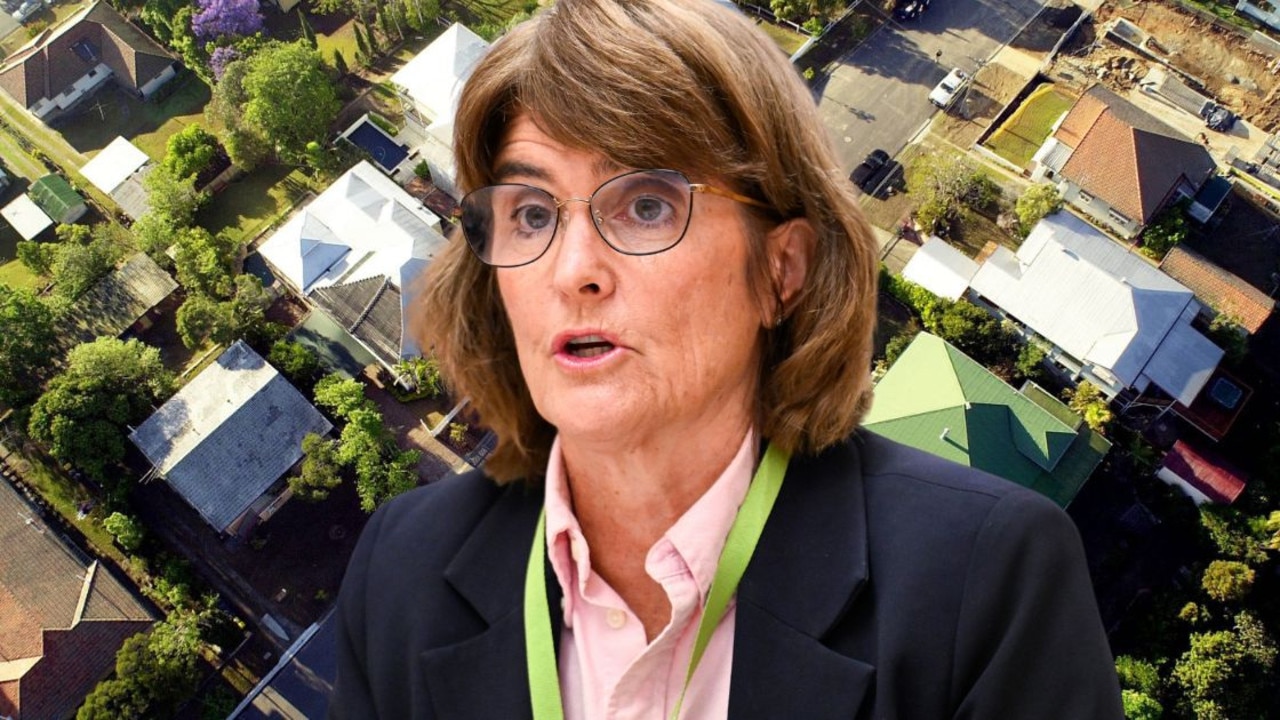Cyclone Debbie left path of destruction and indelible mark on the minds of many
ONE year ago, in a 1200km-long path of destruction, Cyclone Debbie left families displaced, industries crippled, towns isolated, 14 people dead, and a $2 billion damage bill, writes Peter Michael.

WHENEVER I go On Country, I seek out the mayors, the tribal lore-man, the songman, the marked men, and the old aunties.
Let’s face it, it’s the aunties and nannas who hold the family fabric together in Cape York’s Aboriginal communities. They’re the true survivors. They know how to survive. To endure. To show love. To swallow pain.
That’s why it was a shock to see how dull and fatigued the faces of at least two dozen aunties, mums and children were as they sat apart in two rows in Kowanyama’s dilapidated cyclone shelter-cum-multi-purpose centre on Wednesday.
“It was frightening,” elder Priscilla Major says. She had hunkered down with 16 adults, kids and four babies in the hallway of her home as Category 3 Cyclone Nora hit last Saturday night.
Nora, packing 190km/h winds, pummelled Pormpuraaw, 200km north, but lost its sting over land.
“It was our biggest cyclone since the 60s – that nearly killed us all, nearly wiped us off the map,” Major says.
“I guess the adrenaline has worn off, we all just feel really tired now.”

That’s the thing about cyclones, floods and natural disaster: half of the recovery is physical, the other half is mental.
Wednesday marked a year since Cyclone Debbie, one of the state’s deadliest and costliest extreme weather events.
Premier Annastacia Palaszczuk, who was on the Cape to oversee the post-cyclone recovery, admitted her stomach did somersaults at the thought of the catastrophic impact of last year’s Category 4 system.
“I can’t describe the emotions I get every time a cyclone is about to cross the Queensland coast,” the Premier tells Insight.
“You don’t get any sleep. You just don’t know what is going to happen.”

What they don’t tell you about Cyclone Debbie is the lightning show: bolts of electricity, a molten-lava-like sky, the rolling cannon-fire, the crackle and thud of thunder, and the sheer visceral pounding on your chest of the power of nature.
I have never felt so alive, so supercharged, as when Debbie hit the north.
I hadn’t slept for 72 hours, but I was abuzz.
I knew we were out of danger. We had been in Airlie Beach in the eye of the storm. We rode out the belly of the beast, but the electricity storm the night after was something out of the End of Days.
Thousands who witnessed it will tell you. It was spectacular, it was awe-inspiring, it was humbling and terrifying all at once.
Today, whenever winds pick up to a high-pitched screech and whistle, when things bang and trees bend, my nerves jangle.

I get ginger. And I’m not the only one.
Disaster trauma psychologist Dr Rob Gordon estimates that 10 per cent to 20 per cent of all Queenslanders affected by Cyclone Debbie have some form of collective mental fatigue from the event.
“Every disaster has its own character,” Gordon says.
“A cyclone has its own nature – it is an extraordinary event. For some people, it can be this window into apocalypse: the skies change, society breaks down, and it is human nature to go into survival mode.
“Every time the wind blows, an unconscious part of the mind says, ‘here it comes again’, and with it comes all the adrenaline, the long dull grind of stress, and a period of tremendous exhaustion.
“For flood victims, it is the same, it is the collective memory of the muddy mess, dirt, stink, and a big quagmire.
“It is hard to get unstuck out of that mental quagmire.”

One year ago, there was an apocalyptic scene at ground zero. Hundreds of homes and buildings damaged; scores of yachts wrecked on the shore; streets strewn with tin, sand, debris and shards of glass; trees uprooted; rainforests stripped bare; and thousands of lives thrown into turmoil.
Along a 1200km path of destruction, from the Whitsundays to Lismore, Cyclone Debbie left families displaced, industries crippled, towns isolated, 14 people dead, and a $2 billion damage bill.
On Hamilton Island, where “all hell broke loose” in the 263km/h winds, the luxury resort has been rebuilt, the tourists are back, and rooms are at full capacity, but many private homes are still building sites.

Gordon says it can take between two and seven years to recover from the mental chaos of disaster.
“To do this, we must talk about it, build our own narrative of resilience.”
By this he means tell ourselves how these moments of disaster give us an earthly vision of the triumph of human spirit.
How they bring out the best in us all.
How – bloodied but unbowed in the face of adversity – we shine.


